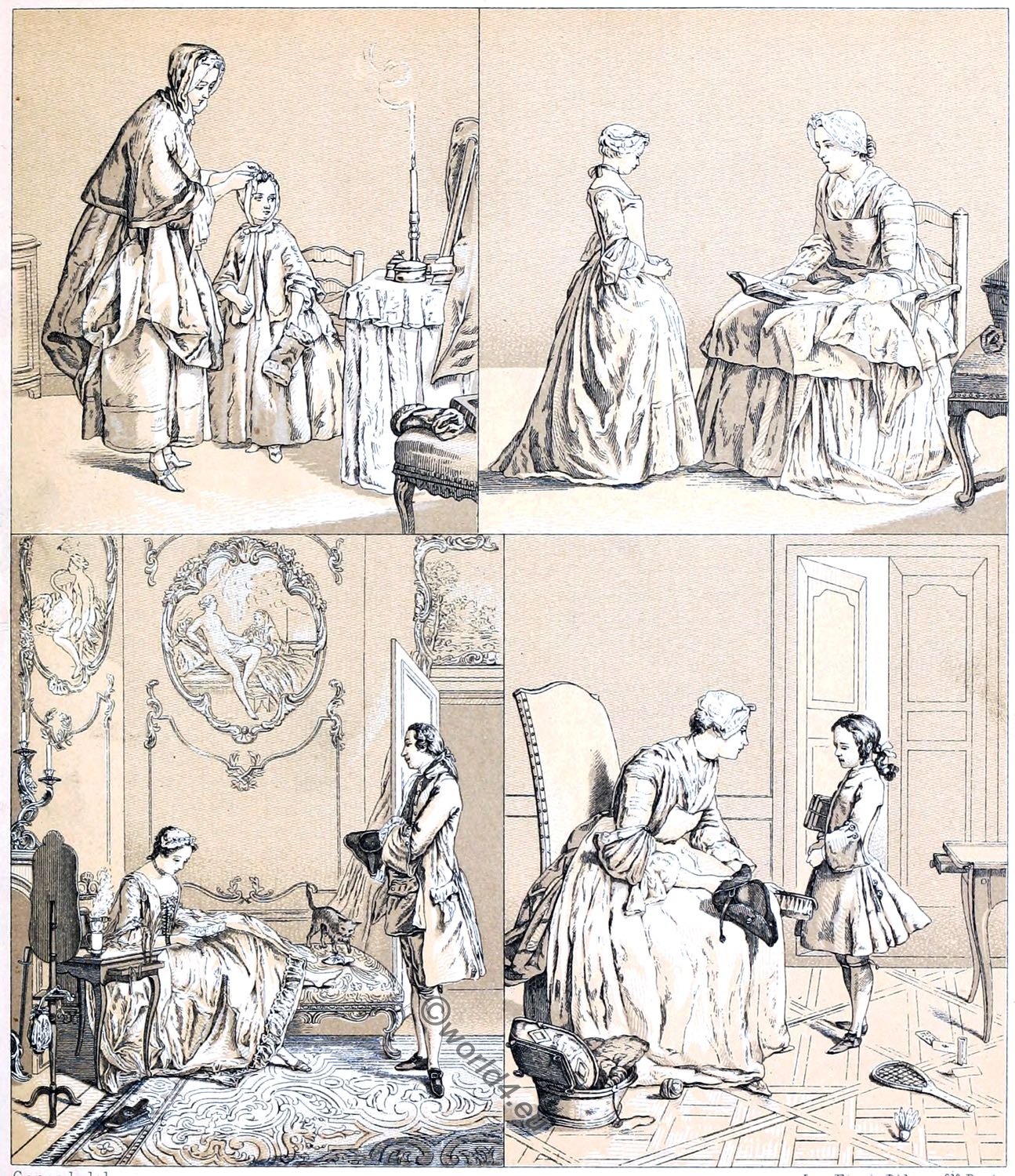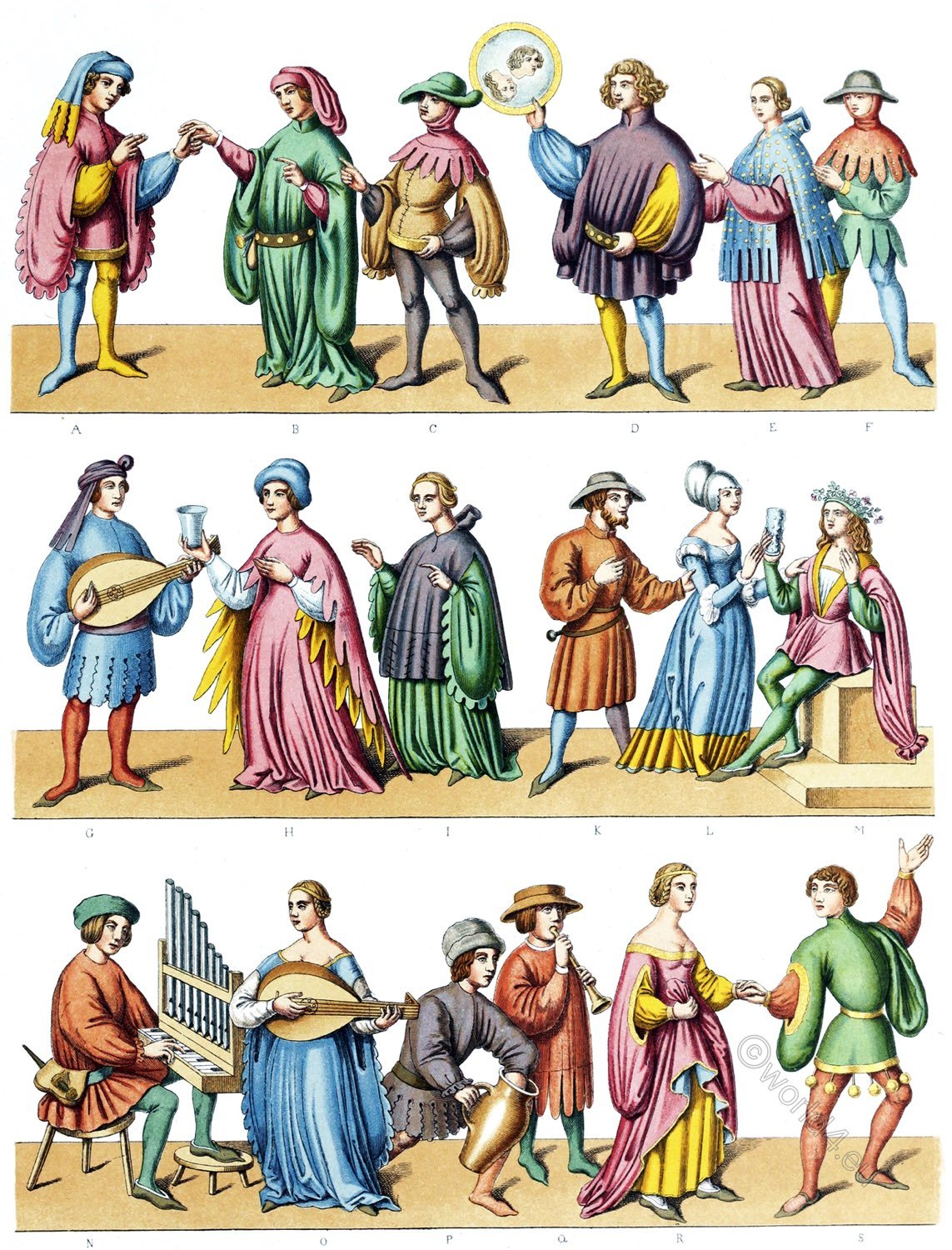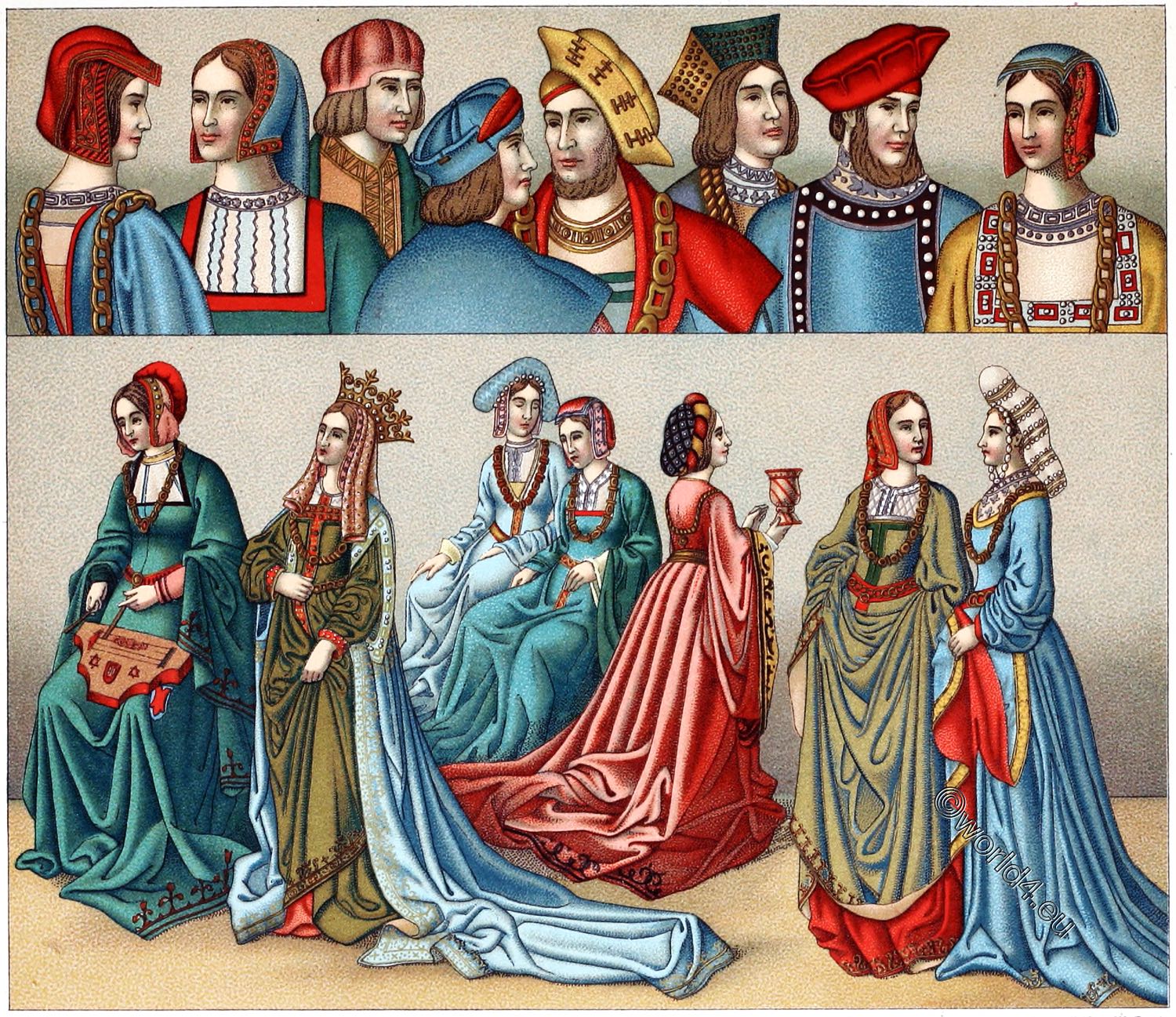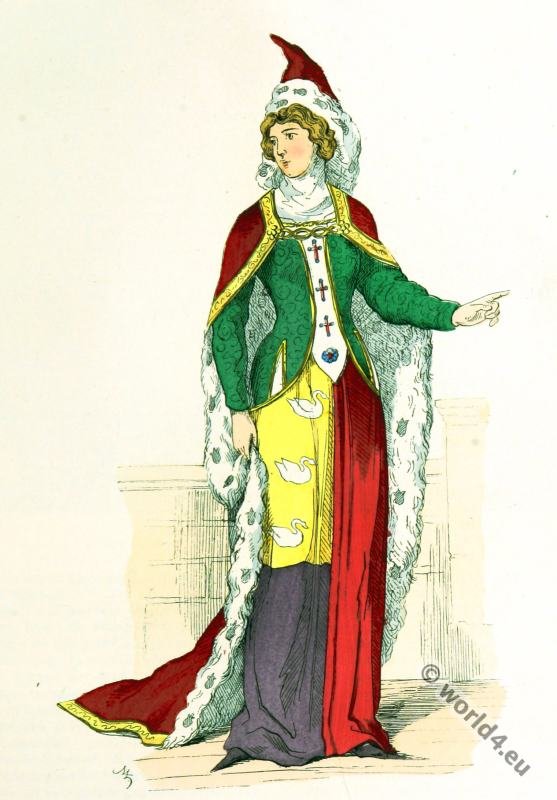
1, 2,
4, 3,
FRANCE. XVIIITH CENTURY.
COSTUMES OF THE MIDDLE CLASSES. BOURGEOIS WOMEN AND THEIR CHILDREN. (1739-1749.)
Chardin, the painter of the bourgeoisie, has revived the bourgeois family piece, neglected since Abraham Bosse. Nos. 1, 2 and 3 are fragments borrowed from his paintings.
No. 1. Morning toilet.
The mother, dressed in the black cap with an open skirt, arranges a fanchon on the head of the little ones. As the prayer book lying on the chair and the still burning candle indicate, they are preparing to go to the early mass.
No. 2. Good breeding.
The mother, in the bonnet and breast cloth – the bodice and front part of the striped robe are covered by the pinafore – lets the daughter recite the Gospel. The latter is dressed in a dressing gown with a striped bodice.
No. 3. The governess.
Dressed in a negligee bonnet, a breast cloth, over a petticoat and a large white apron, she brushes the tricorn of the boy who is about to start school. The boy is wearing a lap skirt with broad lapels; his hair pouch is tied up with a bow.
No. 4. The love letter.
The lady in the Watteau robe with short sleeves with muslin trimming, lace-up bodice and petticoat with furbelows receives a love letter from a messenger, sitting carelessly on the sofa. The furniture of the elegant boudoir is in rocaille taste.
Nos. 1, 2 and 3 are taken from the engravings of Lépicié and Lebas after Chardin’s paintings.
No. 4 is marked: Aubert pinxit and Duflos sculpsit.
See Charles Blanc, La Vie des peintres and de Goncourt, l’Art au dix-huitième siècle .
Source: History of the costume in chronological development by Auguste Racinet. Published by Adolf Rosenberg. Berlin 1888.
Related
Discover more from World4 Costume Culture History
Subscribe to get the latest posts sent to your email.






